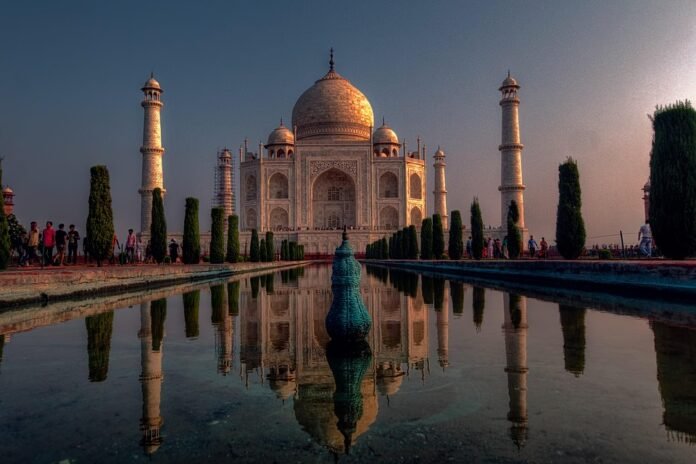Of course. Here is an article on India’s infrastructure push, structured to cover the vision, the progress, and the challenges.
India’s Infrastructure Push: Building the Future, Overcoming Obstacles
Across the vast expanse of India, a revolution is underway. It’s not a revolution of political upheaval, but one of concrete, steel, and fiber optics. From the snow-capped Himalayas to the tropical shores of the south, the nation is in the midst of an infrastructure blitz of a scale and ambition unseen in its history. This monumental effort is more than just building roads and bridges; it’s a calculated strategy to reshape the country’s economic landscape, connect its 1.4 billion people, and cement its position as a global powerhouse.
But this journey, while promising, is paved with formidable challenges that test the nation’s resolve at every turn.
The Grand Vision: More Than Just Concrete and Steel
At the heart of this push is a clear vision: to create a seamlessly integrated, efficient, and modern India. The government’s initiatives, primarily the National Infrastructure Pipeline (NIP) with an outlay of over $1.4 trillion, and the PM Gati Shakti National Master Plan, are the twin engines driving this transformation.
Gati Shakti is particularly revolutionary. It’s a digital platform that brings 16 different ministries, from railways and roadways to aviation and telecommunications, onto a single portal. The goal is to break down departmental silos, enabling integrated planning and coordinated execution. Before a new highway is planned, the platform can show whether provisions for gas pipelines, optical fiber cables, and water lines have been made, saving time, money, and the frustration of repeatedly digging up newly built roads.
This integrated approach aims to achieve several key objectives:
- Lowering Logistics Costs: By creating a multi-modal network of roads, railways, and waterways, India aims to slash its high logistics costs from around 14% of GDP to a global benchmark of 8-9%, making its exports more competitive.
- Boosting Economic Growth: World-class infrastructure is a magnet for foreign investment and a catalyst for domestic industry, creating millions of jobs and propelling India towards its goal of becoming a $5 trillion economy.
- Enhancing "Ease of Living": For the average citizen, this means faster travel, reliable electricity, clean water, and digital connectivity, bridging the urban-rural divide.
The Pillars of Progress: A Multi-Modal Revolution
The scale of construction is staggering and visible across multiple sectors:
-
Highways and Expressways: The roar of construction machinery is a constant feature along India’s arterial routes. The pace of national highway construction has accelerated dramatically. Flagship projects like the Delhi-Mumbai Expressway are set to reduce travel time between the two metros by half. The Bharatmala Pariyojana is weaving a web of economic corridors, border roads, and coastal routes, connecting previously remote areas to the economic mainstream.
-
Railways: The Indian Railways, the nation’s lifeline, is undergoing a profound modernization. The semi-high-speed Vande Bharat Express trains have become a symbol of this change, offering world-class comfort and speed. Simultaneously, the development of Dedicated Freight Corridors (DFCs) is separating passenger and goods traffic, allowing freight trains to run faster and more reliably, decongesting the network.
-
Aviation: India’s aviation market is booming. The UDAN (Ude Desh ka Aam Nagrik) scheme has been a game-changer, connecting dozens of tier-2 and tier-3 cities with new airports and air routes. Major metropolitan airports in Delhi, Mumbai, and Bengaluru are undergoing massive expansion to become global transit hubs.
-
Ports and Waterways: Under the Sagarmala Programme, India is modernizing its ports, enhancing their capacity, and improving turnaround times. The development of inland waterways on rivers like the Ganga and Brahmaputra is creating a cheaper, more environmentally friendly alternative for transporting bulk cargo.
- Digital Infrastructure: The infrastructure push isn’t just physical. The rollout of 5G technology and the BharatNet project, which aims to connect every village with high-speed internet, are creating a digital backbone that will power the future of India’s economy, from fintech to telemedicine.
The Hurdles on the Path
Despite the impressive progress, the road to building a new India is fraught with obstacles that are as old as the nation itself.
-
Land Acquisition: This remains the single biggest bottleneck. The process is often mired in legal disputes over compensation, rehabilitation of displaced communities, and complex land ownership records, leading to significant project delays and cost overruns.
-
Funding and Finance: While the government is the primary driver, the sheer scale of the NIP requires massive private investment. Attracting consistent capital into long-gestation projects is challenging, especially with fluctuating economic conditions. The success of Public-Private Partnership (PPP) models has been mixed, and a robust, predictable framework is essential.
-
Bureaucratic Red Tape and Execution: While Gati Shakti aims to streamline processes, implementation on the ground remains a challenge. Coordination between central, state, and local agencies can be slow, and obtaining environmental clearances and other permits can be a painstaking process.
- Environmental Concerns: Rapid infrastructure development inevitably comes at an environmental cost, including deforestation, habitat destruction, and increased carbon emissions. Balancing the urgent need for development with ecological sustainability is a tightrope walk that requires careful planning and the adoption of green technologies.
The Road Ahead: A Foundation for the Future
India’s infrastructure push is a high-stakes gamble on its future. The success of this endeavor will determine whether the country can harness the potential of its young population and secure its place on the world stage.
Overcoming the obstacles will require not just political will but also innovative financial models, transparent governance, and a steadfast commitment to sustainability. The journey is long and arduous, but the foundation being laid today—of smooth highways, fast trains, modern airports, and ubiquitous digital access—will be what a more prosperous and connected India is built upon tomorrow. It is a testament to a nation on the move, building its future, one project at a time.

